

A ‘Forgotten Holocaust’ Is Missing From Indian Food Stories
One of Bengal’s greatest tragedies is overlooked in the West. It’s missing from cookbooks and food writing, too.
On a warm September morning in 1943, Chand Ali Khamaru walked eight grueling miles with a small bundle of rice to his father in Medinipur, in rural West Bengal. With the rice, he had googli (small, hapless snails he had cooked into a broth) and kochu shaak (fibrous leaves of the taro plant, which he had plucked from a pond and steamed in an iron pot). This was during the Bengal Famine of 1943, one of the greatest tragedies to strike the Indian subcontinent, known in Bengal as Panchasher Akal. At the time, the British colonial government recorded 100,000 deaths. But historians now estimate that two to three million died. This period is rarely discussed in the West, but received attention last year as historians discussed new findings on how Winston Churchill, then Prime Minister, exacerbated the Famine.
Khamaru’s memories of this time were chronicled by Bengali writer Sailen Sarkar in Monontorrer Shakkhi, or Witness of the Famine. Both googli and kochu shaak reverberate in Khamaru’s memories as well as those of other survivors. “Even though both these foods were present [before] the Famine, they became widely eaten during it,” Sarkar says. Kochu was a wild plant that could be foraged, and googli, unlike fish, could be found even in puddles. “The lack of anything else led survivors to depend on foods like these. They were not filling and nutritious; but anything they could find, everything that was available, became food.”
Apart from kochu shaak and googli, Khamaru remembers eating small, disdainful portions of khichuri: a limp, brothy, rice-and-lentil dish served at relief camps near his village. As he scoured ponds for fiber and begged landowners for rice water to feed his family, his father, unable to digest the small fist of rice Khamaru had solicited, died on the roadside.
More than 75 years after the death of Khamaru’s father and millions of Bengalis like him, the Famine lives on. Kochu shaak, googli, and watery khichuri resonate in family memories, and appear in kitchens today. Within Bengal, because of the compounding role of the British imperial government and the wealthy and Hindu upper castes, the Famine is also called, in whispers, the Bengal Holocaust. It informs how Bengalis born a generation or two later think about food and, quietly, it lingers in Bengal’s kitchens.
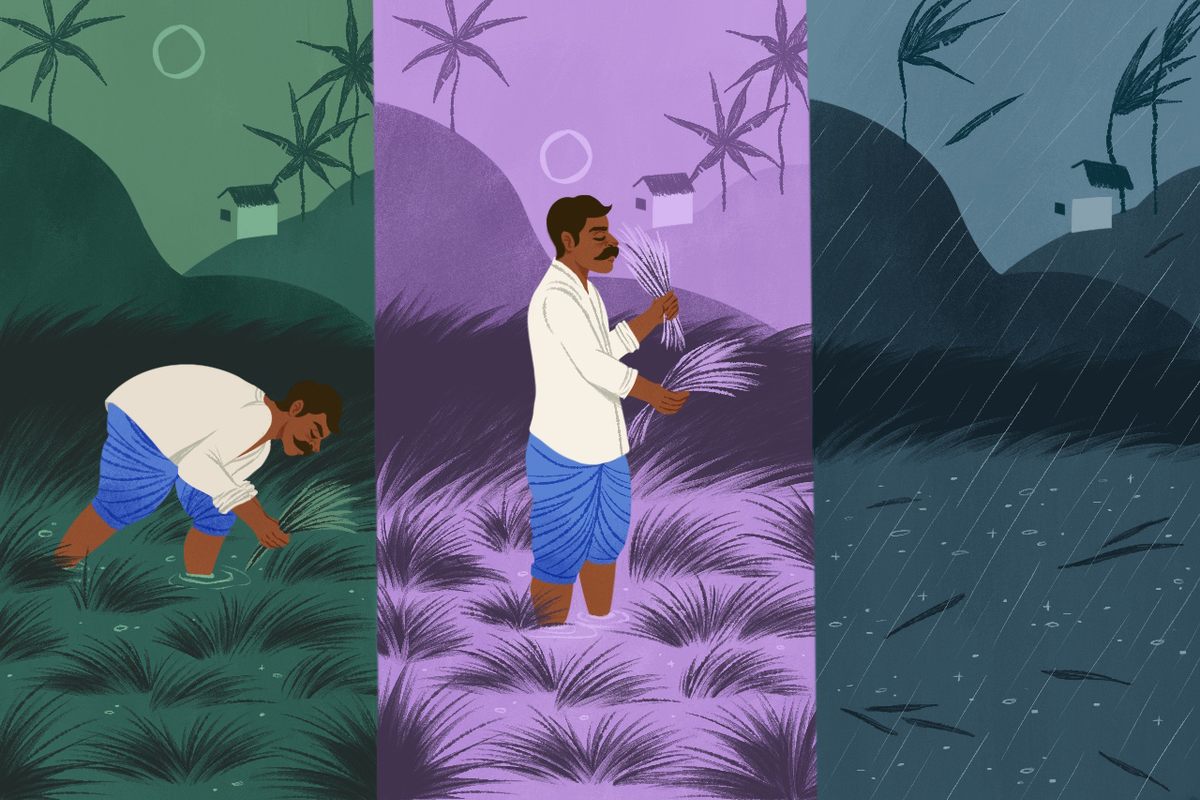
The cuisine of Bengal throbs with regional diversity, and like all food cultures in the Indian subcontinent, what people eat, and how much, depends on their position in caste and class hierarchies. Both West Bengal and Bangladesh, which was previously known as East Bengal and was also part of India, are riverine regions, and fish is central to the diets: soft, staple rui cooked in briny yogurt, or the region’s beloved hilsa, which is rich, succulent, and steamed in banana leaves. Vegetables often take center stage, too: Banana flowers are laboriously peeled and cooked with coconut; fleshy aubergines are sliced and fried into slim slivers of bhaja.
Preferences vary, regionally and individually. But all Bengali food depends on rice.
“Bengalis eat rice three times a day,” says Prasun Chaudhri, a journalist based in Kolkata, who explains that rice is central while wheat, grains, and millet are more sporadic table guests. “If I eat rotis, I have to eat 10!” With this joke, he shares a sentiment that was poignant during the Famine. Only rice can warm a Bengali belly.
Bengal has three seasons of rice—aman, aus, and boro—the winter, summer, and autumn crop. In 1942, the year that brought the Famine, a cyclone blew through the region, trampling the winter crop, which formed a substantial share of food supplies. This was one of the primary reasons for the Famine, which continued until after 1944.
But what started with a natural disaster escalated into a crisis under British policy and Winston Churchill. “When Burma fell in early 1942,” writes Janam Mukherjee, in the introduction to his book Hungry Bengal, “Calcutta became the furthest easterly Allied front against the Japanese.” The British government forged the Denial Policy, in which more than 40,000 tons of rice were taken from rural Bengal to deny food to a Japanese army advancing towards India. “It was evident that [Churchill] thought Indians were the bottom of the social pyramid,” explains Madhusree Mukerjee, in her book Churchill’s Secret War. When British officials wrote in as the Famine escalated, Churchill commented, “Why hasn’t Gandhi died yet?”
A similar boat-denial policy was also drafted under Churchill. “The British seized the boats in the border areas [with Myanmar] and burned them,” says Amit Dey. Today in his late 80s, Dey was a young boy in Kolkata during the Famine, an experience that prompted his scholarly study of the period. Dey sketches a map of the regions impacted, drawing large crosses to illustrate the scale of the disaster. His fingers tremble as he rips through books about the Famine, which he says is not a result of age, but agitation at the way Churchill is extolled in global discourse. “It was a messy and brutal ploy to keep Bengal within the clutches of empire,” he says.
The policy primarily affected East Bengal; more than 65,000 boats were taken, estimates Bangladeshi historian Ifthekar Iqbal, impacting more that 3 million people. Boats were lifelines, he writes: Homesteads were often built above flood levels while fields were in lower lands. The British also snatched boats into the mainland, destroying a stretch of rural Eastern Bengal. “This led to a scarcity of fish. Without boats, what would fishermen do?” says Dey. “The policy broke the infrastructure of the villages. Without fish or rice, they withered from within.”
As rice vanished, people abandoned their homes and an exodus began. Among the regions that suffered most was Medinipur, which is where Khamaru lived, along with other survivors whose lives are described in Sarkar’s book. Medinipur witnessed an uprising and food riots, causing many of its residents to migrate to the Sundarbans—a wild region on the world’s largest delta, then home to untameable mangrove forests and tigers—in search of sustenance. But it is another migration that features most prominently in documented memories of the Famine: Many thousands of people walked from rural areas to Kolkata in hope of a meal.
“I remember, even when I was three years old, listening to tired moans of ‘Ma, fain dao go na,’ or ‘Mother, give us the rice water,’” says Dey, recounting the voices of those who arrived outside Kolkata’s middle-class homes to ask for the water left over from boiling rice. “Since there was no rice, the starchy water that it left behind became precious.”
“Fain,” or “rice water,” is the most well-documented memory of the Famine. It appears in Ashani Sanket, a film by Satyajit Ray, and in paintings by Chittoprasad Bhattacharya of hungry families waiting in corners of Kolkata for food. “And we are left sleepless,” wrote poet Birendra Chattopadhyay about those who had traveled to the city, “Praying, the night long, swathed in a whiff of intoxicating rice.”
Without rice, other foods emerged. Families ate bulga, a sweet-tasting soup made by boiling discarded wheat in water, and cooked bits of bajra (millet) with salt. “In East Bengal, [people turned to] atar ruti (flatbread made from stone-ground flour),” says Mahruba Mowtushi, a Ph.D. researcher from Dhaka. And because of the potato production in East Bengal at the time, locals substituted rice with alu bhorta (a potato mash seasoned with salt) and alu tarkari (stewed potatoes) for rice.
Other replacements were not as fruitful: Bengalis cooked grass seedlings and boiled tree leaves, such as jute leaves, into amorphous clumps. “Barely edible rice husks, which were typically separated out to feed cattle, were eaten mixed with bits of salt,” Sandip Mondal, who grew up in a village in Asansol District, remembers his mother telling him. “Sometimes tal (the fruit of the palm tree) was added to enhance taste.” He shapes his fingers into small circles. “They also ate river snails that were shelled for pops of meat,” he says, approximating their miniscule size. “And sometimes, wild potatoes were rummaged for and dug from the ground.”
But as Mondal and the survivors in Sarkar’s book recollect, none of these tactics were enough. As rice got scarcer and more expensive, the prices of fish, mustard oil, and cloth tripled, leaving people in irrevocable conditions of hunger. Many died, others fled their homes. Over time, theft, destitution, and disease tightened its grip in Bengal. Families sold young girls, and their small shares of land, in return for a plate of rice. The worst of the suffering lasted a nasty, brutish, and long three years.

All around the world, people eat foods invented during lean times. During the Soviet Union’s famines, nettle was used to make bread and soups that are still eaten today; in Cambodia, the popular snack of fried tarantulas fed millions during the dictatorship of the Khmer Rouge. In harsh times of war and famine, Italian villagers clamored and jostled for bread, which they made into hardy soups. In the United States, the need to stretch meat during the Great Depression produced now-beloved slugburgers, while earlier dairy deficits of World War I produced tomato-soup cake. Many of these foods are well known, and their origins are documented or even celebrated.
The foods of the Bengal Famine, though, remain absent from accounts of the region’s and India’s cuisine. Indian food annals ignore the moments of hunger endured by millions, focusing instead on taste-centric gastronomy, laying out tables of opulence and abundance as normative, and foraging the past for pleasantries to set as placeholders for the history of Indian cuisine. Meanwhile, foods that fed and continue to sustain the powerless remain largely ignored.
“Even as the famine was a time of adversity, who bore it?” asks Sarkar, when he talks about interviewing survivors in Medinipur and other rural pockets. The adversity of the Famine was not suffered equally. “That is why these foods are not written about at length. These were not literate people, they did not document. And also, these were memories and recipes associated with shame,” he says. “Why would they want to relive them again and again?”
Though the Famine impacted the whole region, it was mostly suffered by lower castes and classes. In late 1943, when the Famine was at its most deadly, the harvest stabilized and grains became available, but the poor were still unable to afford it. In the 1940s, Bengal followed the Zamindari system, in which agricultural laborers were employed on meager salaries or were bonded labor by landowners. In return for their crop, they received minimum wages and food (mostly rice).
Starvation “is not the characteristic of there being not enough food to eat,” the economist Amartya Sen wrote in Poverty and Famines, “but of some people not having enough food to eat.” In his study, Sen shows that the Famine caused the starvation of agricultural laborers, fishermen, and husk gatherers—most frequently from Dalit communities (those excluded and oppressed by the Hindu caste system), and most often women. Bengali society was, and remains, viciously stratified on the lines of caste, class, and gender. It was into these crevices that the Famine leaked.
As the people of Bengal starved, the British shipped food out of the country to feed its troops, and even as some harvest was recovered, Bengalis had to buy food on an escalating free market. (Colonial administrators established some rationing and price controls in India, similar to the ones that aimed to keep Britain fed during the Blitz. But these were mainly in a few urban centers, with more widespread policies coming only later.) With the war straining trade and supply, wealthier families hoarding food, and speculators manipulating food prices for profit, the cost of rice remained prohibitive for villagers, who sought sustenance in streambeds while British imperials and wealthy and middle-class Kolkata residents bought the food they needed.
“It was a rural phenomenon,” says Rama Sangaye, an ethnographer based in Kolkata. “It preyed on the poor, Dalits, migrants, and adivasi (indigenous) farmers.” This inequality extends to whose experiences of the Famine are remembered and re-told. In interviewing the survivors of the famine, Sarkar found that most had never been asked about their experience. What was documented, including memories of “Fain,” were what he calls “projections from the verandas of the urban elite.”
Given the shame surrounding the Bengal Famine, and the complicity among some upper-caste families in worsening it, its effect on cuisine is little studied. “When we talk about histories, who ever concerns those of the bereft?” adds Sangaye, addressing this gap of documentation in the histories of Indian cuisine.
Foods from the time of the Famine, while not found in middle-class homes, or eulogised in cookbooks and recipe blogs, are still around today, especially during lean years and in the region’s hinterlands. Tamarind is used to desalinate water in the Sunderbans in the way Khamaru and others did when they arrived there. Googli is still fished from small ponds and cooked into thin stews. Kochu shaak is cooked up with fish. Muri, which was eaten as a replacement for rice, scents every train ride through the region’s lush landscapes. These foods were not invented during the Famine, but they are often linked to the time.
“I think it is impossible to say that the famine had any positive impact on the cuisine, let’s not sugarcoat it,” says Utsa Ray, author of Culinary Culture in Colonial Bengal. “It definitely did make changes. Food is much a thing of context and availability as it is about something that is premised as culture, or cuisine.” This is evident in how foraging remains a mainstay in rural Bengal, and how wheat, in the form of flatbread, entered Bengal’s kitchens. “Because of the rationing system introduced later, in the 1950s, partly because the experience of the famine emphasized wheat, many Bengalis got used to having chapatis,” adds Mukerjee. “Before the famine they mostly ate rice.”
Some dishes live double lives, enjoyed and portrayed as comfort foods, but with Bengalis and Indians rarely acknowledging their darker histories. This is true of khichuri, which is often described as a popular rice-lentil dish with a long, pan-Indian history, but was eaten by desperate Bengalis in meager aid camps during the Famine, and is still cooked in massive quantities, limp and brothy, for refugees at Indian borders, for displaced populations in tents.
Most of all, it is the mindset of scarcity and worry that is a lasting legacy of the famine. “It is not just the Famine’s food, but the frugality it prompted in its survivors,” says Aditi Sen, a researcher based in Canada, who writes about how her grandmother, a survivor of the Famine, would fry up marigold flowers for her grandchildren as a snack, or how she forced them to eat fruits that smashed onto the ground from trees. “She would ask us to collect wild vegetables from the graveyards,” she writes in an email. Thickening curries with starch, cooking with vegetable skins, and eating flower petals are all Famine-era techniques that persist.

“Famine techniques have been around for centuries,” says Ray, contextualizing the impact of the Bengal Famine. “[It] does resonate in the region, but so do the others that happened before and after it.”
As Ray observes, the Famine was not a one-off event, but an explosion of hunger that remains in the region. Bengal suffered its first Great Famine in 1770, when 10 million died. In 1974, after the Bangladesh Liberation War, as many as a million people or more starved in refugee camps in West Bengal. In 1979, countless Namasudras (one of the many communities ostracised from the Hindu caste order in Bengal) were starved by the West Bengal government in Marichjhapi through a blockade. Earlier this year, Cyclone Amphan devastated Bangladesh and parts of West Bengal, submerging harvests and raising food prices. Bengal has staggered in and out of starvation for decades.
“Has famine departed from this earth? Has hunger?” writes Sarkar, in the introduction of his book, as he describes how many Indians still live on the edge of starvation. Did the Bengal Famine ever end?
In the scorching heat of a slow afternoon in Asansol, Mondal sits outside his home, cutting off fish heads and tossing them into a pan for the evening’s meal while he recounts more tales from his childhood. While Mondal doesn’t dig for vegetables like his mother used to, he still spends evenings catching frisky mud crabs that he boils or fries, or fetching oonch, or eels, during rainy days. Rich in blood, oonch can be plunged into boiling water to cook, or fried and eaten with rice. “You won’t get oonch in the market,” he says. “They never make the cookbooks, either.”
But does this mean oonch is not food? Mondal asks. He is resolute that it is. “Oonch, so succulent, so bloody, it is one of my favourite things to eat.”
Gastro Obscura covers the world’s most wondrous food and drink.
Sign up for our regular newsletter.

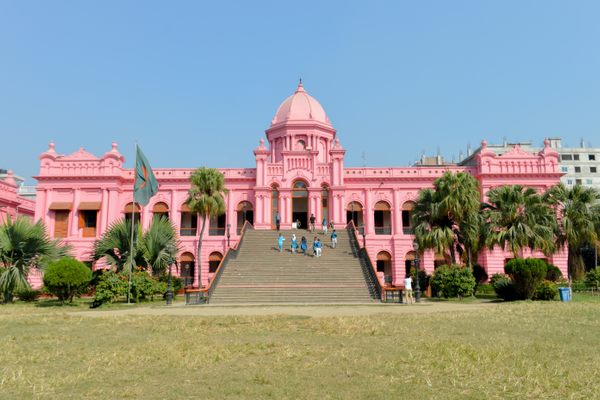

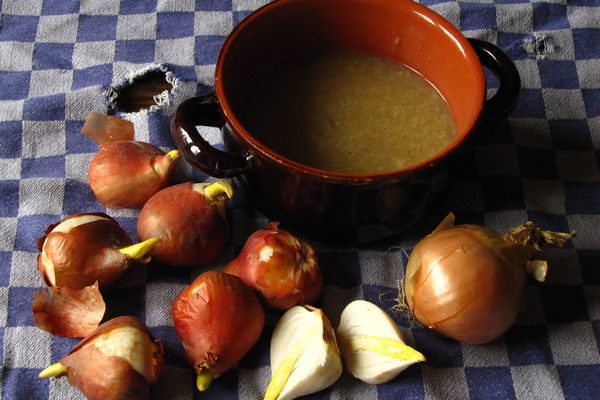


























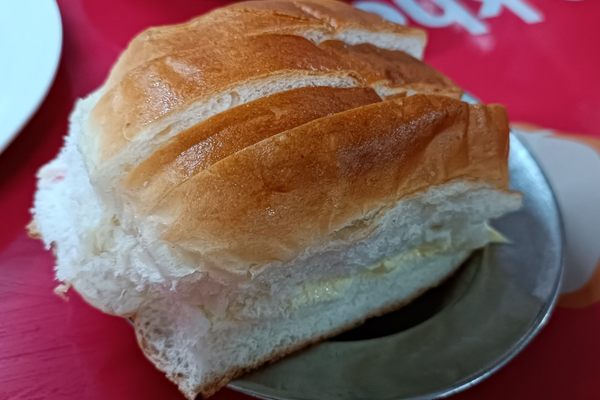

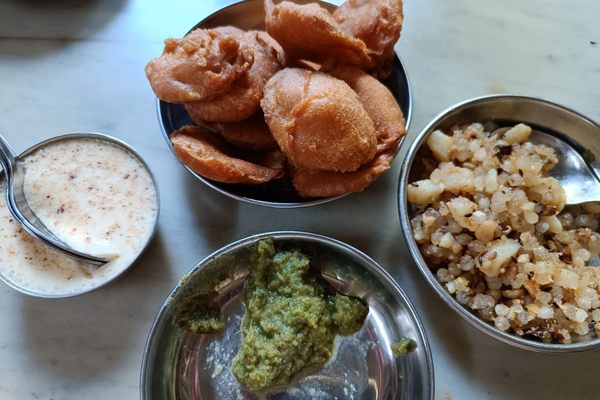




Follow us on Twitter to get the latest on the world's hidden wonders.
Like us on Facebook to get the latest on the world's hidden wonders.
Follow us on Twitter Like us on Facebook